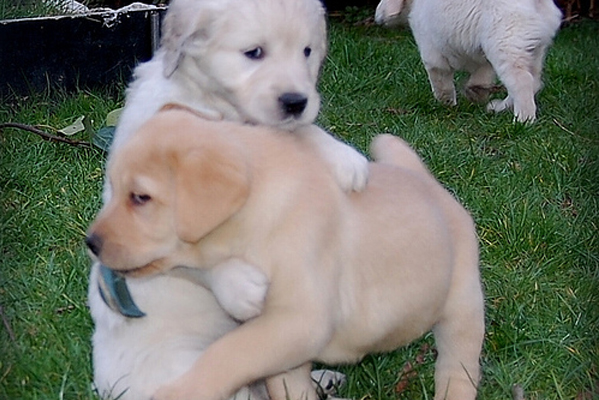Did you know that puppies start to form play partner preferences very early in development (prior to 7 weeks of age) and their preferences for play with the same individuals intensifies over time? This was found in a study published in prestigious scientific journal Animal Behavior. The study also found that puppies almost never balanced out their play style (i.e. took turns being in the top dog/bottom dog roles).
Lessons learned?
We shouldn’t necessarily break up play just because it looks one sided. We should let the dogs decide. If we separate the bottom dog from the top dog and let the bottom dog go, and she runs right back to continue play with her top-dog friend, then play between these dog partners is probably ok. Another interesting find was that male puppies ‘soften’ their play style when playing with females but not when playing with other males. It’s almost as if they will let the female “win” at play games in order to entice the females to play with them.
The gentlemanly dog behavior is even accompanied with a bow. “We found that self-handicapping tends to occur in conjunction with play bows,” lead author of the study, Camille Ward. “A play bow is a signal that dogs use when they want to communicate playful intentions to a potential play partner,” added Ward. Females were more likely than males to initiate play with their own sex, but that may be to stave off more vicious behavior later. “Because adult female-female aggression, when it occurs, can generally be more intense than female-male aggression, we suggest that females may use play with other females as one way to practice threat and appeasement signals that may serve to ritualize aggression and limit overt aggression later on,” said Ward.











